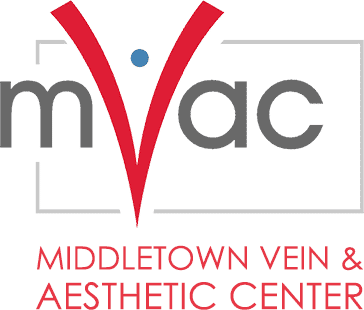Chronic venous insufficiency is medical term used to describe damaged one-way check valves in veins. These valves normally help direct the flow of blood back towards the heart. When the valves fail, blood pools back into the legs (reflux), enlarging the diameter of the vein, and making the valves even less functional.
The term "chronic venous insufficiency" is commonly associated with term "varicose veins", but it can be used to describe any stage of the disease, as it progresses slowly through stages described below (generally, but not always in this order).
Stage 0 - No visible signs of venous disease
Symptoms
In the beginning, there may be no noticeable physical signs. Someone with venous disease in this stage, with symptoms, would experience only heaviness or aching in the legs after standing for a long period of time. This person may be aware of a family history of varicose veins, have an occupation that requires standing for long periods of time, or have some of the other risk factors such as: obesity, lack of excercise, prior pregnancies. Female gender and age also play a large role in the development of venous insufficiency.
Treatment
If symptoms are present: Compression stockings. Free vein screening is recommended if there are risk factors.
Stage 1 - Telangiectasias (spider veins) or Reticular veins (net pattern)
Symptoms
These superficial veins can develop without any symptoms, and if so, are only of cosmetic concern. If symptomatic, can cause burning and itching. Spider veins can range from small thin pink-red clustered lines to large dark purple clusters. These veins are small, about 0.5 mm - 1.5 mm in diameter.
Reticular veins are a green-blue to purple color, measuring about 2mm, and are slightly deeper than spider veins. Burning and itching are common symptoms.
Treatment
Generally cosmetic and not covered by insurance. A free screening is recommended prior to any elective treatment, to determine if there is underlying venous insufficiency (this should be treated before any cosmetic vein procedure).
If no venous insufficiency there are several treatment options available for these veins, which depend on location, size, quantity and color. These options include microsclerotherapy (most common), topical laser, and ohmic thermolysis (least common).
Stage 2 - Varicose Veins
